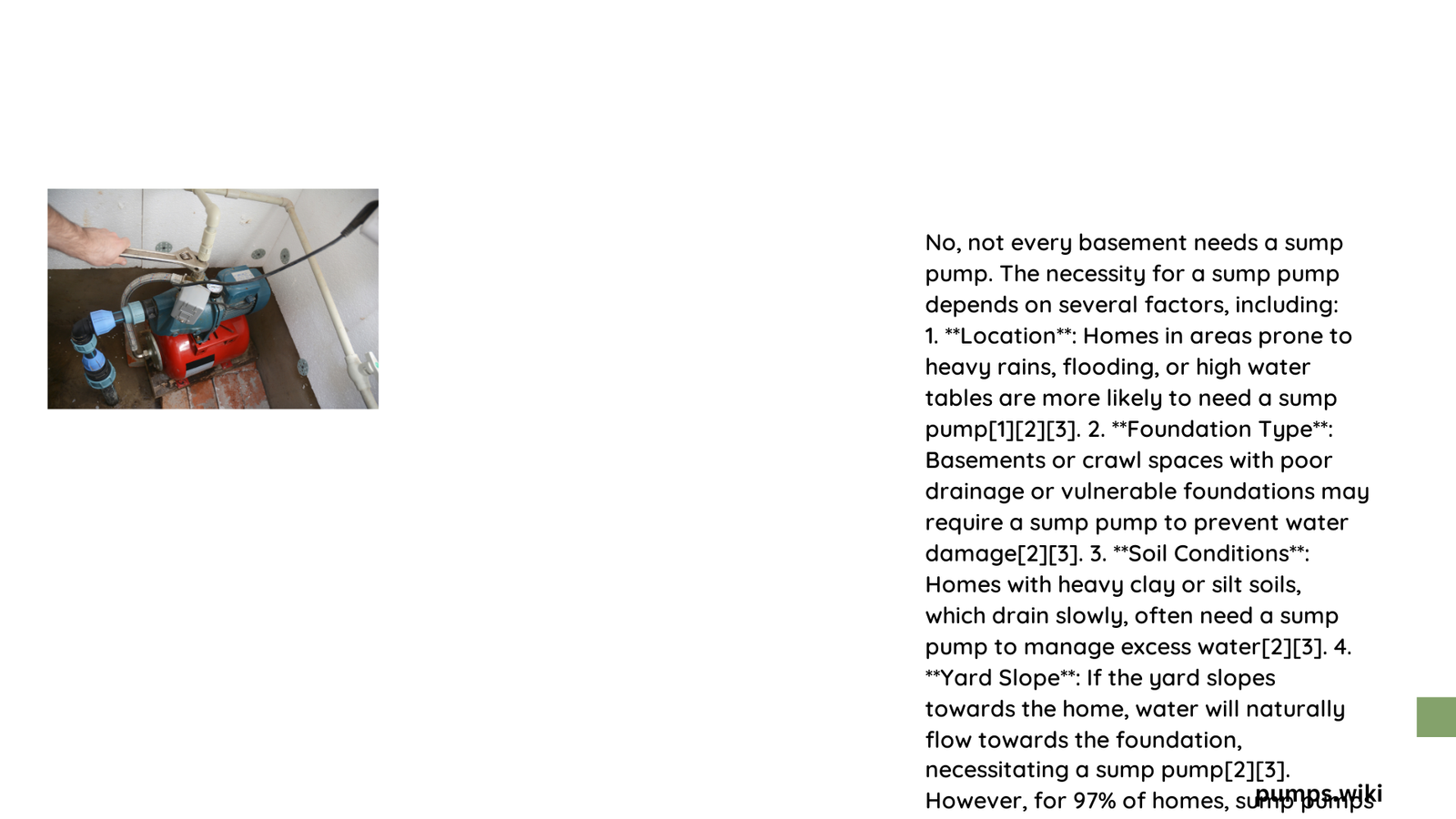Basement water management is crucial for homeowners seeking to protect their property from potential flooding and moisture damage. Not every basement automatically needs a sump pump, but specific geographic, structural, and environmental conditions make sump pump installation a critical preventative measure for many homes. Understanding these factors helps homeowners make informed decisions about basement water protection strategies.
What Determines Sump Pump Necessity?
Are All Basements at Risk of Water Damage?
Basements are inherently vulnerable to water intrusion, but the risk varies significantly based on several key factors:
Geographic Location Risks
- High Water Table Regions: Areas with consistently high groundwater levels
- Flood-Prone Zones: Locations near rivers, lakes, or in low-lying terrain
- Regions with Heavy Rainfall or Snowmelt
Soil Composition Factors
| Soil Type | Water Drainage Potential | Sump Pump Recommendation |
|---|---|---|
| Clay Soil | Poor Drainage | High Recommendation |
| Sandy Soil | Good Drainage | Moderate Recommendation |
| Loamy Soil | Moderate Drainage | Conditional Recommendation |
How Do Basement Characteristics Impact Water Risk?
Basement construction and design play significant roles in determining water intrusion potential:
- Basement Depth: Deeper basements face higher water pressure
- Foundation Age: Older foundations may have more structural vulnerabilities
- Existing Waterproofing: Previous water mitigation efforts
- Local Drainage Patterns
What Are Warning Signs Requiring Sump Pump Installation?
Critical indicators suggesting immediate sump pump consideration include:
- Recurring basement moisture
- Past flooding incidents
- Visible water stains on walls
- Musty odors
- Efflorescence (white mineral deposits)
- Mold growth
Comprehensive Sump Pump Evaluation Strategies

When Should Homeowners Invest in Sump Pump Systems?
Recommended scenarios for sump pump installation:
– Homes in flood-prone regions
– Basements below ground level
– Areas with clay or poor-draining soil
– Regions experiencing frequent precipitation
– Properties with historical water intrusion
What Installation Considerations Matter Most?
Key factors influencing sump pump selection:
– Pump capacity (1/3 HP to 1 HP)
– Power source reliability
– Backup battery systems
– Professional installation
– Periodic maintenance requirements
Cost-Benefit Analysis of Sump Pump Protection
How Expensive Are Potential Water Damages?
Average potential costs without sump pump protection:
– Minor water damage: $2,000 – $5,000
– Moderate flooding: $5,000 – $15,000
– Severe structural damage: $15,000 – $50,000
What Are Long-Term Benefits?
Sump pump advantages include:
– Preventing structural deterioration
– Reducing mold and mildew risks
– Protecting property value
– Lowering insurance claims
– Enhancing overall home safety
Conclusion: Personalized Water Management
While not every basement universally requires a sump pump, many homes benefit significantly from professional assessment and strategic water management solutions. Consulting local water management experts can provide tailored recommendations based on specific environmental conditions.
Recommended Next Steps
- Conduct professional basement moisture assessment
- Evaluate local geographic water risks
- Investigate sump pump installation options
- Develop comprehensive water management strategy
References:
– FEMA Flood Protection Guidelines
– EPA Basement Waterproofing Resources
– National Association of Home Builders
